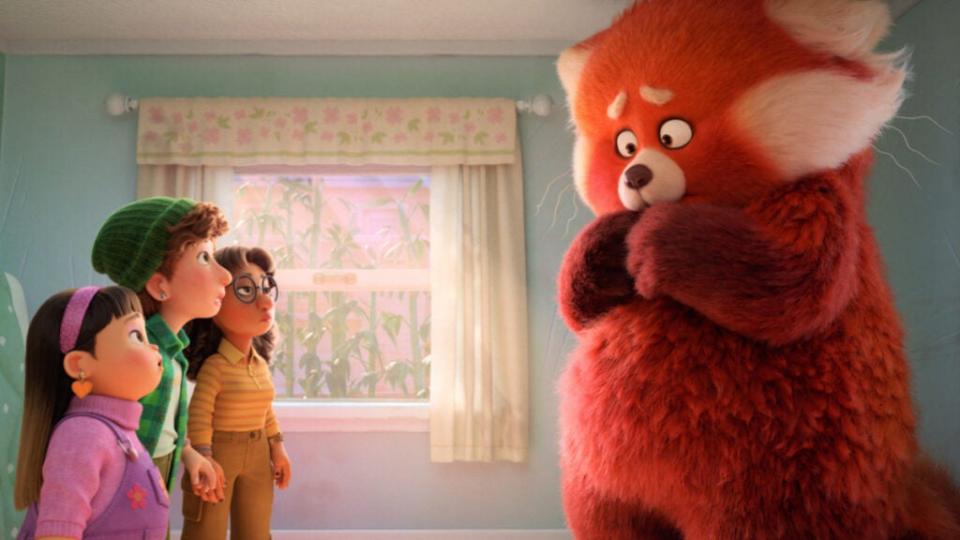‘Turning Red’ Director Domee Shi Finds Fresh Ideas by Trusting Her ‘Weird Gut’
- Oops!Something went wrong.Please try again later.
- Oops!Something went wrong.Please try again later.
If there was a defining lesson that Domee Shi learned early in her animation career, it was to “just trust my weird gut.”
“If an idea is really, really weird and kind of shocking, instead of self-editing and getting rid of it in the story, I’ll just let it play out and see the reaction before messing with it,” she told TheWrap.
Shi, who first joined Pixar in 2011 as a storyboard intern before working on the animation for major releases including 2018’s “Incredibles 2” and 2019’s “Toy Story 4,” followed this principle when pitching her beautifully strange and affecting short film “Bao” — for which she won an Oscar in 2019.
And she stuck to her instincts again when developing her feature film debut, “Turning Red,” another beautifully strange and affecting movie that is the most popular Disney+ original to date and cemented Shi’s status as a capital-A artist with a distinct point of view.

Released on the streaming platform in March, “Turning Red” amassed more than 1.7 billion minutes watched in its first week, in 2.5 million households. The movie tells the tale of Meilin (Rosalie Chiang), a Chinese-Canadian tween girl who is entering puberty and discovers that when she gets too excited, she turns into a giant red panda. (It’s an ancient family curse.) Featuring a remarkable visual style that draws inspiration from Japanese anime and millennial boy bands (the movie is set in 2002 Toronto), “Turning Red” is singular in the Pixar canon. It toggles effortlessly between extreme goofiness and earnest thoughtfulness, even broaching the once unthinkably taboo topic of menstruation as well as a frank reckoning with inter-generational trauma.
“We’re always encouraged through Pete [Docter, PIxar’s Chief Creative Officer] and through the creative leadership here to push the medium of animation with every film that we work on,” Shi said. “And I definitely had that in mind when we were making ‘Turning Red.’ Like, what haven’t we seen before in animation? What themes haven’t we tackled yet? What kinds of characters have we not seen? What have we not seen 3-D do yet? All of those questions were definitely in our brains when we were making this movie.” Referring to the numerous women who made up the writing and producing team, she added: “It was helmed by a predominantly female leadership. That’s pretty innovative and cool.”
Also Read:
‘Turning Red’ Director Domee Shi and Producer Lindsey Collins on Making Pixar’s Horniest Movie Yet
Shi was born in Chongqing, China, and immigrated to Canada as a child. Watching “Turning Red” connect with audiences, especially kids who look like her and perhaps harbor dreams of making movies, was an “awesome” experience for Shi. “Not that long ago, I was just a sweaty, nerdy, Asian animation student with big hopes and dreams, just drawing in my dorm room in cold Toronto, Canada,” she said. “We could show these kids that there’s a path for them in this industry and there’s a space for them and their voice.”
Earlier this year, Shi was named a vice president of creative at Pixar. And even though she hasn’t announced her next project (Pixar is notoriously secretive), the new corporate role hardly means an end to her filmmaking career. “I definitely want to keep making films and being in a creative role as much as I can,” Shi said. “I just want to keep drawing for the rest of my life. If I can just do that, I’d be happy.”
So would at least 2.5 million households.
Innovators List 2022: Read about all 12 of Hollywood and the media world’s most exciting disrupters
Also Read:
The Alternate Versions of Pixar’s ‘Turning Red’ That We’ll Never See

